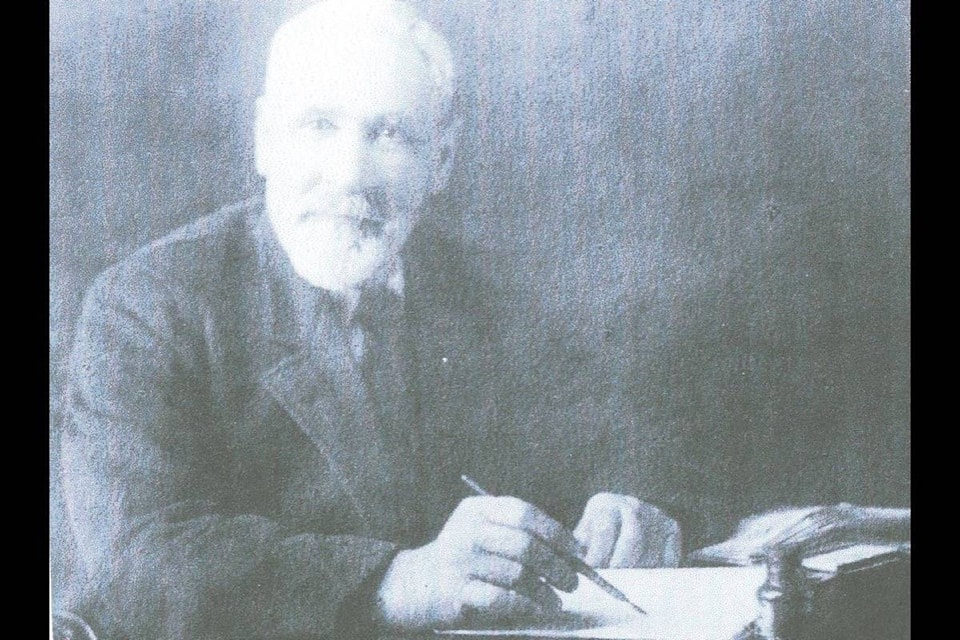“Now we have seen the same story in the [Citizen] so it must be true!”—Roger Cullum.
We have another ‘guest columnist’ today; in fact, we have three. Let’s begin with Helen Stephen, Chemainus, whose email about All Saints Church, Westholme, fell between the cracks, I’m sorry to say. (I do shuffle more paper than most government clerks.)
As she wrote in June 2012, “I read with great interest your article about All Saints, Westholme, and look forward to further information about it. I thought it was interesting to note that the first service was on May 20, 1880. You mentioned that it burned in 1978. Were you aware that the actual date was May 20, 1978?
“Ninety-eight years to the day of the first service. This date in 1978 was our seventh wedding anniversary. We were married at that church. I had attended there as a child in a wonderful Sunday School run by Mrs. Clegg. My parents are buried there. Thanks for such interesting articles.”
Thank you, too, Helen Stephen.
In March 2015, Ken Greenway wrote in response to another column: “Dear Mr Patterson [sic] I hope this will be of interest to you. It was a pleasant surprise that brought back memories, to see the picture of the Empress of Australia, which I instantly recognized and after reading the article prompted me to search through my many photos.
“I sailed from Liverpool (England) to Port Said, Egypt, in early January 1948, when she was still a troopship. I was a 17 1/2 year old ‘Medic’ assigned to join the M.E.I.F. (Middle East Land Forces); I believe it was at the start of the unrest in the Middle East and Israel.
“I recall part of the voyage vividly. After boarding the big grey ship and sailing from Liverpool on our 9-day voyage, we sailed through the Bay of Biscay for 3 days, and like many others, we were seasick for those 3 days until we arrived in Gibraltar, the gateway to the Mediterranean and the Suez Canal. There [were] no fancy wall coverings, thick carpets or comfy accommodation, just the cold steel plates of the ship and bench-like seating and tables on the decks, which had once been painted green or reddish.
“We all had a hammock strung between the many steel posts, with numerous buckets and mops all around, which were frequently in use at all times during those 3 days. I, [and] many others, lay most of the time in our hammocks, leaving only to use a bucket, mopping or staggering to a bathroom and the odd meal, plus attending a muster parade when able. (I think to see if we were still alive.)
“During that time, we stayed fully clothed in our greatcoats and boots for the whole period. On our arrival at Gibraltar we then started to get back to a normal daily life and duties, shaving, showering and eating, etc.
“I purchased the photo [of the Australia] in Valletta Harbour, Malta, from one of the small boats that came alongside the ship, selling their wares. Days later we dis-embarked by tender at Port Said, and returned 2 years later to the UK in another ship, May 1950.
I am now living in Cobble Hill. Yours sincerely, K.E. Greenway.”
And, from Roger Cullum, in January: “Tom: My sister, brother and I have just read your article on Clara Dick, a Ladysmith pioneer. We never knew her, she is our great grandmother. Her daughter Clara (noted in your article) is our Grandmother, and we knew her relatively well. Our Father, Arthur Thomas Cullum, was born in Ladysmith in 1921 and has many times told us the story of the Dick family crossing the prairies to Los Angeles and finally to Vancouver Island.
“Now we have seen the same story in the [Citizen] so it must be true! Thanks for an excellent article. Roger.”
